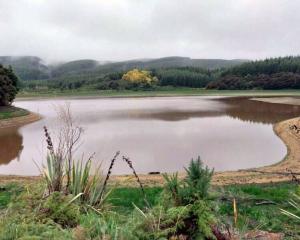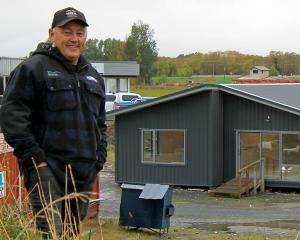The new ''living roof'' at the native plant nursery at the Sinclair Wetlands was, until this week, drying out rapidly, wetlands co-ordinator Glen Riley said.
But after Monday night's rain, the 4m by 4m roof of native grasses had collected 150 litres of rainwater that he would use to water the hundreds of young seedlings growing underneath it in the wetlands' nursery.
After weeks with no rain, the 16mm that fell was a test for the nursery's roughly one-month-old roof, Mr Riley said.
''The next day after the rainfall the [rain barrel] was just about full up to the top - I couldn't quite believe it. I was also quite pleased,'' he said.
''I haven't built a living roof before, so it was also a relief for me that I'd got it right.''
Mr Riley said wetlands did tolerate dry conditions, but ''many trees were feeling the pinch and some ponds had dried out completely''.
In an effort to maximise space for habitat, the roof of the new indoor seedling nursery had been covered in a layer of plastic made from used car tyres, then stones from the Clutha River, a layer of felt matting and a layer of native grasses.
It also included a rainwater collection system.
The living roof did require some rainfall to keep the grasses growing on it, Mr Riley said.
''What the roof is collecting is the excess that the plants don't use,'' he said.
''Those plants ...
need the rainfall and once they get completely drenched the water percolates through the soil and drains out.
''The water that comes through it, rather than letting it go to waste, we're using it to water the seedlings, which takes pressure off ...irrigation schemes.''
He said if the roof had simply been corrugated iron, he could have collected more water, but he wanted to use two sustainable practices: ''having a green roof and having rainwater collection''.
At a cost of about $200 to install a rainwater barrel, such collection could be more widely used.
''People are being encouraged not to wash their cars and water their gardens at the moment, but if people are doing a scheme like this, people are able to do those things without taking up any water from the system.''
Owned by Ngai Tahu, Sinclair Wetlands at 315ha is New Zealand's largest privately owned wetland.












